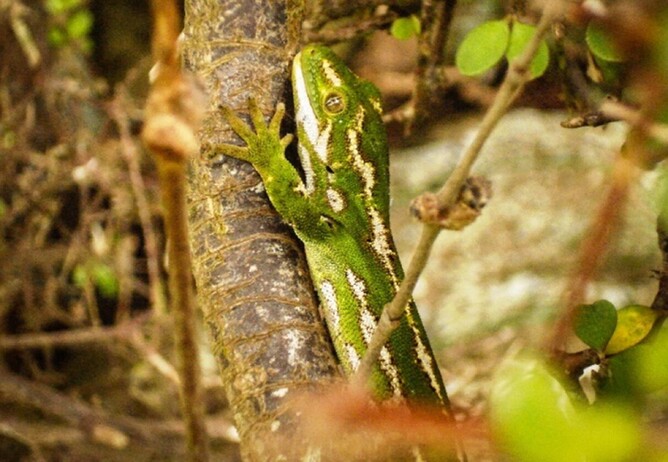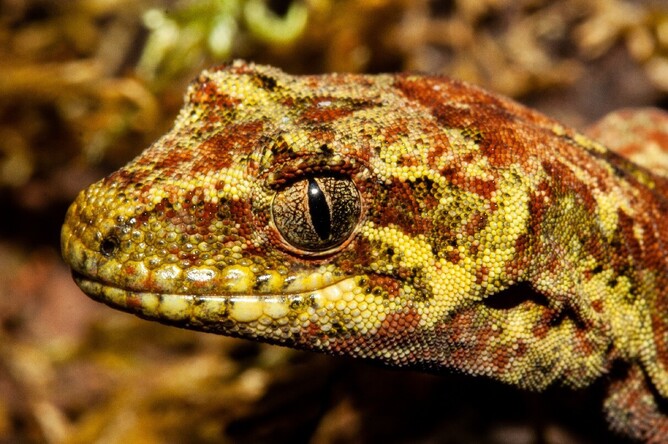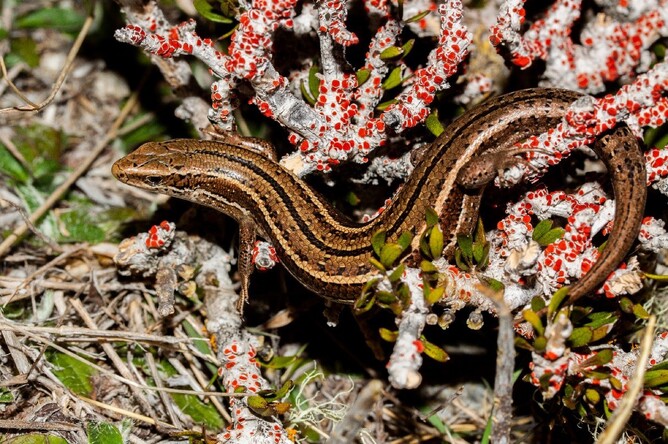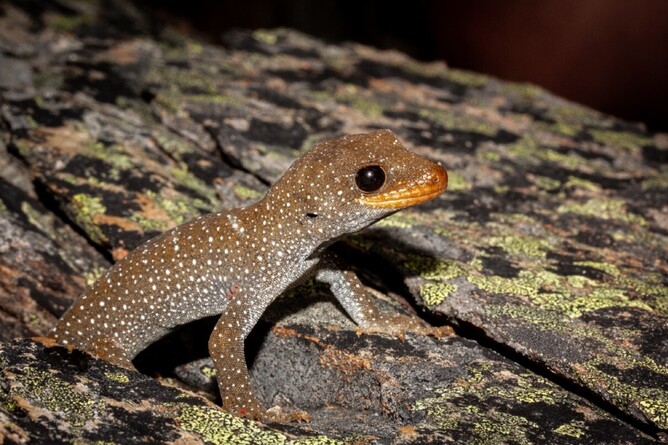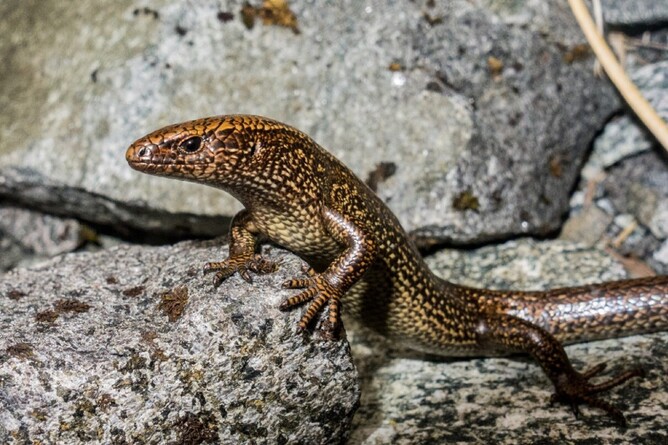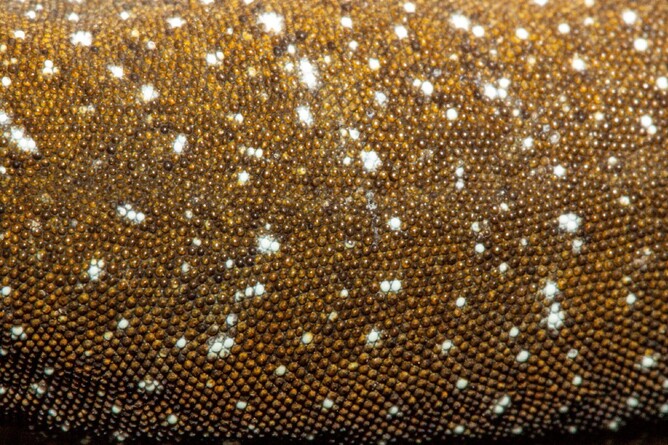In today’s blog, I am delighted to share the interview with Carey Knox, a herpetologist (reptile and amphibian researcher) based in Otago.
Hi Carey, thank you for your willingness to be interviewed.
No worries
Generally, I review art products, books and relate my art adventures on my blog, however, I have just started interviewing conservationists, photographers, artists and others who love New Zealand and our flora and fauna.
I enjoy seeing your Instagram posts and can’t wait to share your work with others and hope you will gain a few more followers too.
I am interested in getting more followers, but only genuine wildlife enthusiasts or photographers. I tend to get a lot of foreigners trying to follow me, some of whom would like to illegally hold our native reptiles as pets. I block them as soon as I see them. I don’t want people (who are only interesting in keeping reptiles as pets in small terrariums) looking at my stuff and thinking that they might like to have this or that NZ lizard as a pet. I advocate for the conservation of wild NZ lizards. I reckon, wherever possible, lizards should be wild and free and not in captivity!
I could not agree more. What is your background?
I grew up in Fairlie (South Canterbury) on the back doorstep of the Mackenzie Country. As a kid I used to enjoy exploring the mountains, finding lizards, spiders, grasshoppers – as some kids tend to do. I was fit and had good stamina. I used to run up and down mountains jumping over matagouri bushes like a wild goat (still do!). That is where I first learnt to be competent and confident in the outdoors, which definitely helped A LOT with my eventual career path.
When I was 16, I moved to the coast (Oamaru) and then Dunedin at 18 for University. Being next to the coast, I took a strong interest in fishing and marine science, so my obsession switched from ‘high country’ to ‘marine world’. I was a reclusive teenager, not having lots of friends, or fitting in with the “cool kids”. Nature was the one thing that gave me real enjoyment though, so I held onto that, and hung out in nature whenever I could.
What inspired you to become a herpetologist?
I was a C to D student right through high school, not because I wasn’t smart, but because I didn’t enjoy it there, and I felt like I didn’t fit in. I scraped together enough grades somehow to go to Otago University at the age of 20. At University I studied Biology, then Ecology, Marine Science, and Zoology. I still didn’t really know what I wanted to do with my life, only that I liked nature and animals, so it seemed like the logical thing to do. After making some good friends at uni and getting into the party scene the ‘C’ and ‘D’ grades continued. Then, eventually, at the age of around 23, I started to think that I might need to try and make something of myself. So, for the first time in my life, I fully applied myself. I turned the C’s and D’s into A’s and B’s, and after I finished my third year (in about my fifth year!), somehow, I had done ‘enough’ to be invited onto the post-graduate diploma in Wildlife Management course. So, I did that in 2008.
The course was excellent, and I highly recommend it, but like most of conservation in New Zealand it was heavily biased towards birds, with very little lizard content. Hopefully that bias is a little less pronounced these days! Anyway, it was during this course, back in 2008, when the lizard obsession started. We had to do a 6-week placement project with a community group or conservation organisation. This could be done anywhere in NZ, or even overseas, and my dozen or so other classmates were going off all over the place to work on various things – mostly rather dull things, like birds or marine mammals, of course . I wanted to stay in Dunedin –because I was about to get married, to a lovely girl named Michelle, who is still my wife and the mother of my three children. Therefore, I was looking for a project local to Dunedin. The only opportunity was a project on jewelled gecko (Naultinus gemmeus) with a community group on Otago Peninsula (Save The Otago Peninsula Inc. Soc.) – who wanted more information on the gecko population they were trying to look after.
I went out to Otago Peninsula with a Masters student (who had just completed a thesis on jewelled geckos) and a local guy who did surveys in his own time (who ironically would later become my mums’ partner!). Alf and Rosi taught me how to spot and photograph jewelled geckos in the shrubs. At this point, I still hadn’t quite caught the lizard bug, but my level of interest was growing! The lizard obsession really took hold when I went out on my own and found a previously unknown population on an area of farmland. When you are going through University you have this idea in your head that almost everything is already known and has been done before, but that couldn’t be further from the truth. With New Zealand lizards, we still know very little, and the time of discovery is really ‘here and now’. For example, eight new lizard species have been discovered in the last 10 years! Back to the story…. After the thrill of spotting this jewelled gecko at a new site, I captured the gecko to obtain a photograph of the dorsal patterns on it (jewelled geckos are able to be identified to individual level based on their individually unique dorsal patterns). Holding this beautiful bright green gecko in my hands and looking at the bright white diamonds on it, the obsession finally took hold of me and I pretty much knew, from then on, it was lizards all the way! Twelve years later the obsession continues (photo of the gecko on that day in November 2008 below).
It is so exciting to hear of the recent discovery of so many lizard species. Hopefully, there will be more discoveries in the future. It is fascinating knowing about the unique patterning of individual jewelled geckos. Does this occur in other lizard species?
The individually-unique patterning occurs in more than half of our gecko species and also some of our skink species, such as Otago skink. It is incredibly useful for monitoring and it is always fun to reencounter old friends! (i.e. lizards you have seen several times over many years).
What does your job involve?
After finishing my master’s project on jewelled geckos and doing a few short-term lizard-related contracts, I was looking for something more permanent. I always saw myself as working for DOC, but it soon became clear that DOC didn’t really hire full-time herpetologists – especially those just starting out. The only viable option, if I wanted to work on lizards alone, seemed to be going into consultancy work, so that is what I did. By that stage lizards had my full focus, and I wasn’t interested in working on anything else. I have been an ecological consultant specialising on New Zealand lizards for about nine years now. Basically, that means anyone can hire me to do anything on lizards. I remain very flexible and open to possibilities, to enable me to work for a wide range of clients.
Examples of the work I do involve desktop assessments (letting people know what lizards MIGHT be in an area without setting foot in it), field surveys, Lizard Management Plans and AEE’s (Assessment of Environmental Effects) for development projects, monitoring programmes to assess population trends, research projects (including DOC research and assisting students from Otago University), taxonomic work (describing new lizard species), reporting, advice on habitat restoration, and advocacy/public education.
Your work sounds as if it has a lot of variety, which must make each day enjoyable. What inspires your work now?
Currently, the majority of my work is for the Department of Conservation, working on ‘Threatened’ and ‘Data-Deficient’ lizard species, and this is where my real passion is centred. Trying to improve knowledge of cryptic (lizards which look very similar, but genetic studies show they are different and cannot inter-breed) and poorly known species, which often live in harsh, remote places. This work takes me all over the South Island to remote and beautiful, but challenging places up in the mountains and so on. My survey team have also come across a few species new to science, which is very exciting, of course.
A lot of NZ’s recognised 124 extant lizard taxa (species and probable species that are awaiting scientific description) are quite endangered, or at least thought to be in decline. Many of these species are genuinely rare and are in rather urgent need of a bit of protected habitat or relief from introduced predators. Others we think might be rare, but don’t really know for certain, usually because the species are highly cryptic and/or hard to find. For example, we have skink species which are only found on vertical rock walls in Fiordland and nocturnal geckos that live on rock bluffs above 1,600 metres, but are only detectable on warm nights. You can imagine the difficulties involved in doing a population census!
Through dedicated work over several years, occasionally we discover that a species is not quite as rare as we originally thought. That always gives me a good thrill knowing that my work has improved knowledge of a threatened species, found a new population, or even a new species, or assisted in the formulation of conservation plans. Basically, the rare and poorly known lizard species of the South Island are my core focus, and this is where I feel I have the skills and ability to make a worthwhile difference to this world and leave a mark worth leaving.
It is so important that these mysteries of the lizard world are your focus and hopefully more attention can be drawn to them in the future. I plan to paint some of these rare creatures, and hopefully, our joint efforts will help raise awareness of their existence.
What aspects of your work do you enjoy most?
My job involves walking around in the sun looking for cool lizards, so I can’t really complain. Lizards generally don’t get up very early in the morning too, so I can sleep in! Seriously though, I absolutely love the field work. Once I return from a trip I am already looking forward to (and planning) the next one.
What is your greatest challenge as a herpetologist?
I’d say planning and implementing successful lizard surveys around the fickle weather of the South Island’s alpine zone. A lot of the rare lizards I am working on are found in the sub-alpine to alpine zone (about 800-1,800 metres above sea level). This is partly because a lot of the rarer lizards have been wiped out of the lowlands (due to historical fires and intensive agricultural practices, as well as introduced predators), putting the final nails in the coffin. Above 800 metres, habitats are generally less modified and more natural than the lowlands, although often far from pristine or original in nature. The lizards stand a better chance up high – if they can tolerate the climate and eek out an existence – which many clearly can, albeit at a very slow pace.
My schedule is constantly changing with the weather. At this time of the year, any one fortnight I could have six jobs in mind and which one I end up doing will depend on the weather forecast in various parts of the South Island. I might have something in the Central Otago mountains, another job in Fiordland, and one in the Catlins. One day I might think that I am going to Wanaka tomorrow, but then the forecast shifts, and I am off to the Catlins instead. I have to go with the flow. Often, I am working weekends and sometimes I might have to do 10 days of field work in a row. I get a break when there is a rainy spell all over the lower South Island. This summer I’ll be doing field work right through the Christmas break. I have to go for it when the weather is good, to get the field work done before the end of summer, especially for the alpine work (which can only be done November to the end of March). It can be tough, but there is a price to pay for all of the fun I suppose.
Wow! It sounds intense.
Please tell us about your photography methods. Do you use any specialist equipment?
Nope, not really. I have a DSLR camera with a 60 mm macro lens. I know the basics of how to adjust the settings to get what I am after. Nothing fancy or complicated. I am not technical or fussy with it. I don’t understand fancy camera lingo and my eyes glaze over when people start talking that way!
Probably, the most important thing that I do have is a good eye for what makes a good photo and, also, crucially, I know exactly how to behave around lizards and how they will behave in response. Thus, I can usually get them in the position I want for a good photo without stressing them out or handling them too much. Generally, I can get several good photos within 5-10 minutes and then leave the lizard in peace. The lizard’s welfare is more important than a good photo, so if you can’t get one quickly, it’s best to move on. Some lizards don’t co-operate, so sometimes it’s best to leave them be! The majority of my photographs are taken whilst I am at work and they are important for documenting what I see. They are also useful for report covers, advocacy, and getting people more interested in our lizards. Like I’ve alluded to elsewhere, NZ lizards have nowhere near the profile of NZ birds, despite them being just as special, unique, and diverse – so I hope that what I do goes someway to redressing the balance.
Do you have a story about a photograph that means a lot to you?
So many, but here’s a recent one! A university master’s student and fellow lizard enthusiast, Samuel Purdie, and I were planning on undertaking a survey on DOC land in coastal North Otago, but decided not to go ahead last minute, after being advised by the neighbouring farmer that a bunch of hunters were going in there. Rather than risk being shot, or at least annoying the hunters by scaring away their game, we decided to come back to the site another time and go do something else instead.
We were keen and enthusiastic to get some field work done, the weather was good, and we had all our gear in the truck. We decided at that moment to have a look at a new area within Oteake Conservation Park. The plan was to follow up a report of a “large black skink” that may have been something exciting, like a scree skink (a threatened skink species) or even an alpine rock skink (a new skink discovered in 2018 and only known from Oteake Conservation Park). As it turns out we did not locate whatever the ‘large black skink” was, but we did find something of even greater significance.
We located only the second known site for the southern black-eyed gecko, a new species within the genus Mokopirirakau, only discovered in 2018. After the initial discovery of this species in 2018 a lot of effort was expended the following two summers attempting to locate them at more sites. These surveys covered 17 potential sites but were unsuccessful in locating these geckos. As a result, there was significant and growing concern that the species may be highly endangered. After so many failed searches and endless pondering over where they may or may not occur in various places within the vast mountainous landscapes of North Otago and South Canterbury, the sheer joy and relief of finding this new site was immense. There were lots of grins and high fives between Samuel and me. The photograph below is a great reminder of this unforgettable moment.
That is a great story and a big win for NZ herpetology.
If you were stranded on a desert island, and you could only take the most necessary equipment, what would it be?
A good torch that I can recharge from a solar panel, so I can go looking for scaly things and creepy crawlies at night!
What do you think are the greatest conservation needs in New Zealand?
Control of introduced predators, but this needs to include ALL mammals including mice, hedgehogs, weasels, feral and domestic cats. If it does not, it may do more harm than good for lizards, as these are all highly significant predators that should not be underestimated. A lot of the predator free goals set by various groups are bird focused and may not benefit lizards at all.
We are still losing lizard habitats on private farms in the lowlands and forestry blocks. Farmers are still clearing shrubland and burning tussock and lizards alive with it (often with approval and permits from their local council!). Pine trees are being planted right on top of lizard habitats, shading out lizards, and forcing them out of their preferred habitats into areas where the habitat may be less optimal, already occupied by other lizards, and/or they may be eaten by predators. Lizards are only fully safe if on DOC land or other protected land or covenants, and even then, they are usually at risk to introduced predators.
It is so sad, that even today, there is scant regard for our vulnerable wildlife. Hopefully more people will consider the impact on the environment when planning future projects.
Which reptiles or amphibia do you think need greater exposure?
All of NZ’s endemic lizards really. The fact that we have over 120 probable lizard species. Some species, like jewelled gecko and Otago skink have a reasonably high profile, but these are not the most endangered ones. In particular, I think the small brown-ish, but unique and rare, skink species could do with a higher profile, including: Alborn skink, White-bellied or Rangitata skink, Chesterfield skink, Cobble skink, Whirinaki skink, and Burgan skink. All these species are currently ranked as ‘Threatened-Nationally Critical’ – the highest possible threat ranking, so they can be considered ‘on the brink’.
Another particularly beautiful, but poorly known skink that I am currently working on is the Awakopaka skink (Oligosoma awakopaka) – which is a highly unique, but incredibly cryptic lizard only discovered in 2013 and only known from one site in Fiordland National Park. Only a dozen or so of this species have ever been encountered. I found the second confirmed individual a couple of years after the first was found, which was a massive thrill (pictured below). It was a magic moment locating this animal in alpine scree. Shouts of “yeah baby!” echoed around the surrounding mountains, whilst the kea and rock wren peered over to see what all the fuss was about.
I am on a massive learning curve, becoming aware of some of these rare species. I hadn’t heard about several of those ‘small brown-ish’ skink species, so I am thrilled that you have made us aware of them.
What advice or tips can you give people interested in improving the chances of endangered species in New Zealand and around the world?
I’ll concentrate on NZ lizards because obviously that’s my thing! I’d encourage people to go out and see what lizards they can find in their neighbourhood, local bush reserve, beach, or when out tramping; but importantly, to do so in a way that doesn’t overly disturb lizards or their habitats. Report all sightings to DOC or your local herpetologist, so that they can be added into the national database. In particular, please report any lizards seen in remote, alpine areas above 1,300 metres asl.
I’d like to see more conservation groups giving lizards equal treatment to birds and considering them in their conservation planning. Lizards often have different requirements to birds e.g.: they may require non-forested sunny areas to bask or, in order to thrive, they may require control or management of predators that generally aren’t a huge problem for forest birds, like mice and hedgehogs. If you have lizards in your garden, either don’t own a cat, or if you do, consider creating protective retreats for them in your garden and covering basking spots with chicken wire.
If you are keen to see lizards in the wild and learn more about their conservation, volunteer for surveys with DOC or your local herpetologist. Join SRARNZ (Society for Research on Amphibians and Reptiles in New Zealand). Make sure your local council, community group, or landowners are aware of lizards local to your area and how to look after them. Encourage your children to take an interest in lizards, but make sure they are aware that it is illegal to remove them from the wild to keep as a pet and that, just like the kiwi, the wild is where they truly belong.
Are you able to tell us about the project you are currently working on?
I am working on about 20 projects over the next year or so for a range of clients, but over half of my current work is for DOC. This work primarily involves improving knowledge of abundance, distribution, habitat use, detection methods, potential threats, and conservation status for a wide range of ‘At Risk’, ‘Threatened’ and ‘Data Deficient’ lizard species. I am currently working on orange-spotted gecko (Central and West Otago mountains), Tautuku gecko (Catlins), southern black-eyed gecko (Oteake Conservation Park), jewelled gecko (Otago), Otago green skink (Otago), rockhopper, Oteake, alpine rock, and scree skink (all in Oteake Conservation Park), burgan skink (Lammermoor Range), and awakopaka skink (Fiordland National Park). I may also assist with surveys for white bellied skink (Canterbury high country), cascade gecko (South Westland), Okarito gecko (Westland), and Cupola gecko (Nelson Lakes National Park). Needless to say, I am going to be very busy. There are a lot more threatened lizard species in New Zealand than there are dedicated field herpetologists!
Once again, you have named several species of lizards I have never heard of. Clearly, there is a need for more herpetologists.
What is your favourite endangered animal and why?
Currently, my favourite is the southern black-eyed gecko. I was on the field team with fellow herpetologist Tony Jewell when this species was discovered in January 2018. Almost as exciting as initially finding the gecko, was obtaining the genetic results, which proved beyond all doubt that this was a species new to science. Then, again, when we found the second site in November 2020, it was a big thrill. I am looking forward to undertaking further work on this gecko. This gecko ticks all the boxes for me. It lives in highly scenic, remote and difficult to access alpine locations (my version of paradise!), it is cryptic and difficult to locate, requiring dedication and expert skill, little is known about its biology and habitat-use, and it has striking black-eyes and extraordinary galaxy-like spots on its back and sides (a pattern that is not seen in any of the other New Zealand geckos).
Such an amazing creature! I can see why they are currently your favourite lizard.
Thank you for discussing herpetology and photography with us today. It has been so interesting hearing about the multiple aspects of your work and research. I have really enjoyed learning a lot more about New Zealand’s unique lizards. Do you have any social media links you would like to share with the readers?
Basically, any semi-decent photograph I’ve ever taken of a New Zealand lizard is up on my Flickr page, along with other flora and fauna encountered along the way. There are individual albums for each lizard species, so I like to think that it’s a useful educational resource.
